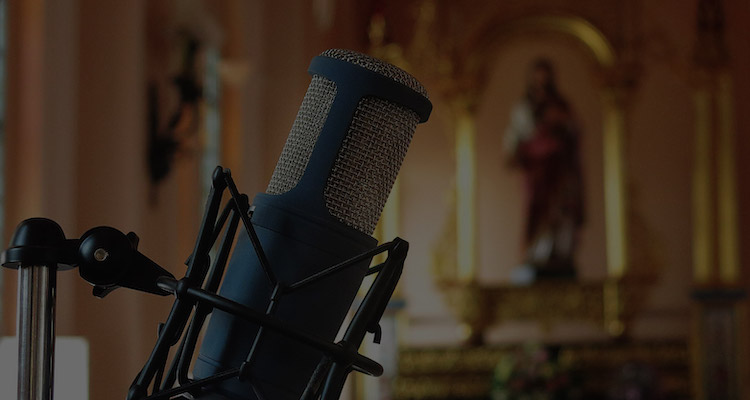In the Cloud Part 2: Options for Analog Signal Processing Hardware

In October 2019, I wrote a column about how much of the industry was moving into the cloud. Well, as that was being written, several moving parts came into play and — poof — another cloud-based concept came to fruition. So maybe everything is going to move into the cloud, or at least a lot of hard-to-find, cool analog hardware will.
Things Come Together
A little explanation is needed: One of the most exciting aspects of the annual Audio Engineering Society’s North American convention is the “hidden gems” feeling. That is, the features of wandering the assortment of small booths at the back of the hall, where there are often some very unique ideas on display. This is where one will find the strange, the only one of its kind, and for this column, the little innovators willing to bet everything on their own abilities to make a technology work (at least most of the time) in the real world.
Because pro-audio and recording are small industries, relatively speaking, the absolute scale necessary for success does not have to measure up to the levels required by a mass market, or mainstream consumer electronics product, for example. In fact, it’s much closer to the parallel world of ultra-high-end consumer stereo gear, where tiny, almost custom manufacturers and developers can survive with limited volume products for specialty customers at somewhat exclusive pricing. But that same exclusivity opens the doors to exotic materials, new technologies and the what-if kind of experimentation that ultimately drives the whole industry forward. It’s the home of the one individual with an overwhelming passion and the will to make it work kind of obsession.
Thankfully, the professional recording industry only requires that you can support it and keep it alive. In the meantime, the rest of the industry plays catch-up with the concepts or accepts the technology. However, sometimes the acceptance never comes, and like the stratospheric Hi-Fi world, the road to success is littered with the bodies of those who didn’t make it.
This past October (2019), in New York City, another one of those nascent ideas got a chance to step onto the main stage and see if the industry was ready to take it to the next level. This time, it was a frankly long-overdue joining of the cloud and the internet with legacy analog physical hardware legends to create unique platforms for creative signal processing access.
The Idea
The most-sought-after analog signal processing hardware is typically made in minimal quantities, often decades ago. Therefore, it’s expensive to own or rent. (By rent, I mean in the conventional sense: where you actually get the box and hook it up to your systems with cables and connectors.)
How many facilities or individual freelancers can afford something that costs $5000-10,000 to rent — and even more to buy. (Hint: not many!) Add in the scarcity of the actual hardware, which makes the entire process even more complicated. (In some cases, only one or two units were custom-built for a particular studio or artist.)
But — here’s the golden idea — what if one could “rent” time to use said hardware for affordable per-hour rates? Using a now much more available high-speed internet connection, users can send audio off through the one-off signal processing unit with a full set of virtual controls and then get it back in almost real-time at high resolution. All that’s needed is a plug-in GUI (that was free to download).
Two companies are now offering anyone who signs up the chance to do precisely that. The first one we stumbled on was Access Analog, with headquarters in the Denver area, which happens to be a significant internet communication hub. Plus, it’s home to a mountain of available bandwidth and cutting-edge broadband technologies and providers. Handy.
The company lays out its offering as follows: “Access Analog gives musicians and recording engineers real-time access to professional analog audio hardware over a standard internet connection.”
Audio streams from the Analog Matrix plug-in across the internet, through the analog hardware, and returns to the plug-in in virtually real-time.
The website continues: “The Analog Matrix plug-in (which provides full Mac and Windows (AAX, VST 2, VST 3 and AU support)) remotely controls the physical knobs, buttons and switches on the actual audio hardware. The audio hardware meters and indicators are precisely tracked and displayed in the plug-in interface in real-time. The hardware is unaltered and remains in original condition.”
Our experimentation with this system and interface clearly showed that the system (now in revision 5 of the plug-in) generally works as advertised. The ever-growing list of hardware is exciting, and one can, in his or her virtual world, build up the exact hardware signal chain needed with full 24bit/96kHz streaming and offline processing available.
Another plus: Users can link/connect as many pieces of equipment in whatever order needed. Add, remove and reorder hardware units in the chain in real-time while listening to the effect on the audio. The system will capably route the audio seamlessly, but, all the usual analog-gain-related errors are possible and careful management of relative levels essential (just like in the real world). Also, this is real hardware, so signal degradation, quality issues with input/output transformers and so forth are likely to show themselves, as they would if the actual box were sitting on a user’s desktop.
For specific details and further information on costs, gear lists go to https://accessanalog.com or contact Chris Barrett, one of the founders of the company at chris@accessanalog.com or 303-514-2591.
The second company to move into this new arena is called Mix Analog. Mix Analog, which identifies itself as the best sounding online mastering room. It uses your browser to send signals back and forth; however, plug-ins for Mac OS and Windows (now in beta testing) will allow communication directly from a DAW or similar interface.
This company suggests that to get the best quality from its system, you will need a minimum of 10 Mbps, internet speed, although if you want to use its 192 kHz/24-bit option, you’ll need something considerably faster even in non-real time mode. At that resolution, remember, uncompressed file sizes can quickly get massive and thus take quite a long time to transfer on anything under near gigabit connection speeds. For more details and to get the latest information go to https://mixanalog.com.
We’ve experimented with both services using our Pre-Sonus based Studio One (Ver4+) DAW and related computer hardware on an ATT Giga-verse fiber optic internet connection (very, very fast!). They both work as far as we can tell. We did not do actual quality testing or any scientific checking of verification on performance claims, so that is something every user will have to verify individually.
How Does it Actually Work?
To make use of these services, you upload your file to a virtual control room/mix space with hardware racks and so forth. You can then fine-tune settings, with (depending on your connection, what level of quality you choose and a host of other factors) almost real-time playback.
When you’re done, you can save and download a final version — again, with several latency and quality options. Access Analog stresses real-time streaming, but you have to carefully select the correct mix of buffering time, lossless or compressed audio. (Note: You can choose to go offline and use uncompressed audio for your final file.)
Both services depend on hardware, so you have to book a time to reserve specific pieces of gear. From our exploration, the two services take slightly different approaches to hardware control. Access Analog uses refined robotics, as well as routing options, to accommodate different mono/stereo scenarios. You can choose to use two mono units side-by-side in their rack plug-in to process each channel of a stereo signal individually. The plug-in allows the saving of presets for parameter automation.
Mix Analog uses, at the moment, a proprietary stepped, drop-in, relay-based replacement for existing controls. This purportedly provides very repeatable settings, and eliminating servos reduces the time required to move to a new environment. There have been indications that a plug-in interface is in process, so it would seem that shortly there will be less of a difference in how the controls operate — but that remains to be seen. It is important to note that both of these services are very new, and changes, updates, enhancements, and of course, problems, can and will occur at a rapid pace and will require patience with the interfaces. It will take time and a large number of real-world users to let either company truly fine-tune their offering(s) and resolve the minor bugs. However, even right now — in the very early days — remember: both are fascinating ideas backed by committed people with a real passion for simplifying access to unique hardware platforms.
The Business Side of Things
The business models of the services are quite different. Mix Analog is a subscription service that works very much like booking a real studio. Customers prepay for their time but can roll it over into the next month or cycle if they don’t use it up. Pricing details should be checked with the sites/services as they evolve — and may be different now from when we looked a month or two ago.
Access Analog currently (as of late November 2019 — check with the site to verify current offers/conditions/costs) has introductory pricing. The service is not subscription-based, and the plug-in is free.
Latency!
Of course, the elephant in the room (virtually speaking) is latency — the same problem that devastated all the initial attempts at creating a viable method of online collaboration. Latency is a sneaky beast. It can show at several points in the audio chain.
To reel off a few, you can and will likely have plug-in latency, internet latency and robotics latency. Add in the A/D conversion latency acquired, getting your audio into and out of the analog hardware. Just be aware of the problem. It can be handled, but it can also be a nightmare if mishandled. Both services will equally be subject to the whims and vagaries of internet connections and other potential glitches. Will this work long term? Will it be cost-effective? We have to wait and see.
It is another migration of an idea into the cloud; the only place it could be made to work. A lot of investment and hard work has gotten us this far. Where it actually goes — stay tuned — as the cloud continues to expand and consume ideas and move resources into the virtual world.
Anyway, didn’t you always want to access one of those legendary Neve or Solid State Logic Buss compressors for a final mix — well now you can, by the hour! And, for our HOW audio production friends, this is a beneficial way to dramatically increase your available hardware list for a particular service, or one-off. As long as you can meet the technical requirements for internet bandwidth, recognize that there are latency issues and that you may not be able to work in real-time, and so forth, this is open to you as well.
In my opinion, it’s also a unique way to experiment with specific analog hardware without actually buying the unit or its plug-in (if one exists, which is not always the case). So this as-a-service for analog equipment becomes yet another way to “rent” hardware without having to plug or connect anything to anything physically. Ah, the virtual world!





